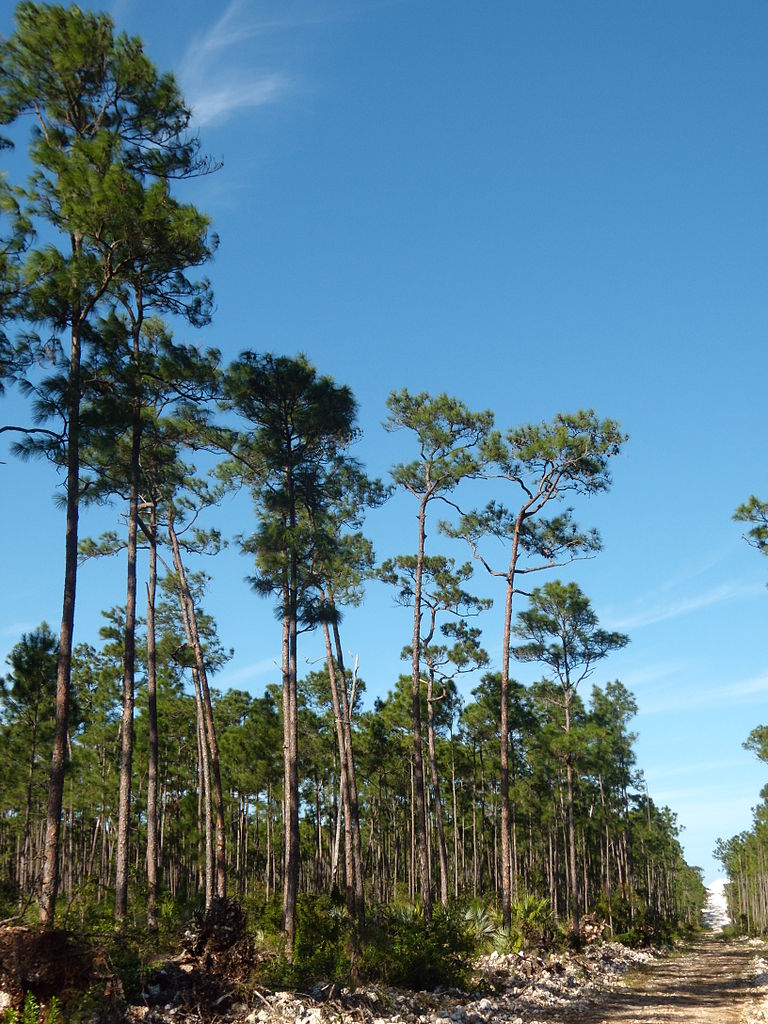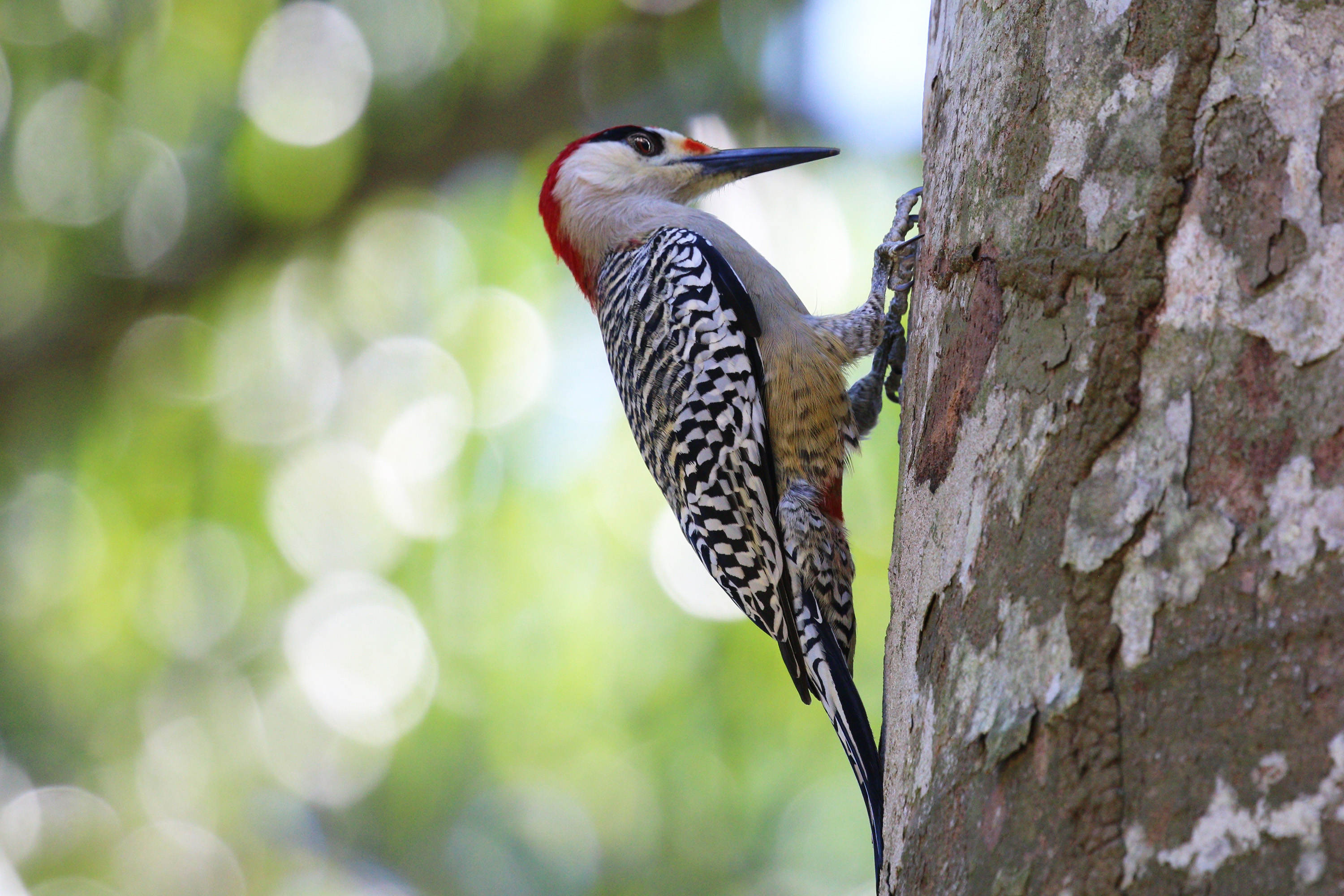Bahamian Pineyards
The ecoregion’s land area is provided in units of 1,000 hectares. The protection goal is the Global Safety Net (GSN1) area for the given ecoregion. The protection level indicates the percentage of the GSN goal that is currently protected on a scale of 0-10.
Bioregion: Caribbean Islands (NT26)
Realm: Central America
Ecoregion Size (1000 ha):
690
Ecoregion ID:
552
Conservation Target:
46%
Protection Level:
5
States: The Bahamas, Turks and Caicos Islands
The pine forests of the Bahamian island archipelago and Turks and Caicos Islands, known as “pineyards”, represent a unique habitat in the Caribbean. Dominated by native Caribbean pines, this forested ecoregion is distinguished by the Bahamas pine variation (Pinus caribaea var. bahamensis) which is botanically distinct from the other varieties of pine around the world.
The biodiversity within these forests includes numerous residents and migrating bird species, moving between North and South America. These pine trees have the unique adaptation of being able to live in sandy and salty environments, but they need to develop strong root systems to withstand the hurricanes which define this region’s climate.

The flagship species of the Bahamian Pineyards ecoregion is the Bahamas pine. Image credit: Courtesy of Caleb Spiegel, USFWS
This ecoregion is found in varying proportions on the northern Bahamian islands of Grand Bahama, Abaco, Andros, New Providence in the Bahamas, and the Caicos Islands of North and Middle Caicos and Pine Cay. The distinguishing species P. caribaea extends from the Bahama Islands through Cuba to Belize, Honduras, and Nicaragua where it reaches the southernmost point of occurrence of any North American pine at about latitude 12ºN. The dominant vegetation is made up of both pine and mixed broad-leaved woodland.
Almost every island contains some wetland habitat, with the great majority comprised of shallow brackish to saline lagoons, mangrove swamps, coastal flats, and inter-tidal mudflats. These forests host broad-leafed shrub understory, with species such as poisonwood, wild guave, the endemic five-finger, Coccothrinax argentata, and Thrinax morrissii. Some islands have an understory of sabal palmetto where the pine forest occurs in wet areas or near the water table. Ridges tend to be dominated by coppice habitat. Areas of decomposing leaf matter inside the pine forest also nurtures indigenous fig, dogwood, lancewood, and Gumbo-Limbo.

Bahama woodstar. Image credit: Creative Commons
Naturally occurring fire is very important in maintaining this ecoregion, without which succession to a broadleaf forest would occur. Without these pine forests there might not be adequate habitat for the three endemic mammals in the Bahamas: the Bahamian raccoon, Bahamian hutia, and funnel-eared bat. The Bahamian pine forests also provide suitable habitat for endemic bird species such as the Bahama yellow-throat and the Bahama woodstar.
The endangered Kirtland’s warbler can be found wintering in pine forests after their breeding season comes to an end. On the island of Abaco there is an endemic population of the rose-throated parrot which nests beneath the ground in limestone solution cavities. During their breeding season, they use the pine seeds as part of their diet to supply much-needed protein to their chicks.
The National Park on Abaco, covering 80 km2, protects the largest acreage of pine forests in the Bahamas while the Lucayan National Park on Grand Bahama protects some pine forests and coppice hardwood forests. On New Providence, the pine forest habitat is somewhat protected as it is the watershed area for the largest Bahamian population living in Nassau.
Predominant threats to this area include logging, lack of unified protection strategies, introduction of invasive species, and climate change. The negative impact of these direct pressures is compounded by larger issues such as a lack of efficient management. The priority conservation actions for the next decades are to: 1) implement forestry legislation and regulations to ensure sustainable management of protected forests and resource extraction; 2) practice selective thinning of pine forests to reduce fire risk; and 3) implement fire regime management.

West Indian woodpecker. Image credit: Charles J Sharp, Creative Commons
Citations
1. Brown, D.E., F. Reichenbacher, and S.E. Franson. 1998. A classification of North American biotic communities. University of Utah Press, Salt Lake City, Utah, USA.
2. Sanchez, M., Hamilton, M.A. & Farjon, A. 2013. Pinus caribaea var. bahamensis. The IUCN Red List of Threatened Species 2013: e.T20364362A20402659. http://dx.doi.org/10.2305/IUCN.UK.2013-1.RLTS.T20364362A20402659.en. Downloaded on 18 April 2018.
3. Henry, P.W.T. 1974. The Pine Forests of The Bahamas. Land Resource Study N0. 16. Ministry of Overseas Development, UK. 178pp.
.jpg?auto=compress%2Cformat&w=1600)


